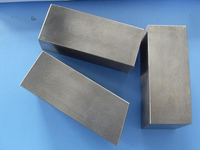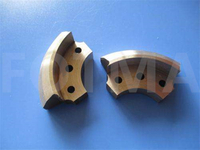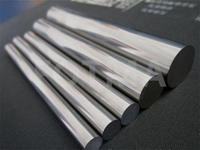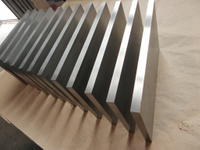Views: 9 Author: Site Editor Publish Time: 2019-04-17 Origin: Site
01 Associated Molybdenum Resources
The source of molybdenum concentrate is mainly divided into copper sulfide, tungsten and molybdenum and other associated molybdenum ore (MoS2). During the period of 2011-2015, due to the continuous decline of copper prices, some copper-molybdenum mines accelerated the implementation of associated molybdenum metal. Separation, accompanied by a significant increase in molybdenum production.
In 2016, the proportion of by-product molybdenum in molybdenum concentrate production has reached 62%. China's molybdenum ore is dominated by primary ore, while overseas mines are dominated by associated ore.
Associated ore mining costs are lower, but its grade is also low, generally not more than 0.1%; overseas crude ore grades are higher than domestic, such as Climax's US Henderson primary molybdenum grade of 0.24%.
The cash cost of foreign primary molybdenum ore is 6-7 US dollars per pound of molybdenum. For example, the cash cost of Henderson molybdenum ore is 5.6 US dollars per pound of molybdenum;
The world's sixth largest supplier, Thompson Creek Metals Canada, has a cash cost of $5.8-6.3 per pound of molybdenum; the cash cost of a major copper mine by-product molybdenum concentrate in South America is around $4 per pound of molybdenum.
The cost division of domestic enterprises is more serious, and large enterprises rely on economies of scale to control cash costs.
Compared with overseas mines, the cash cost of Luoyang Molybdenum Industry is about 3.6 US dollars per pound of molybdenum, and the cash cost of Jinduicheng Molybdenum Industry is about 3.3 US dollars per pound of molybdenum. The recovery rate of molybdenum metal is about 85%.
The cost of other small and medium-sized mines is relatively high, generally around 10 US dollars / pound of molybdenum.
02 Molybdenum recycling and utilization
With the continuous development of the molybdenum industry, the consumption of molybdenum raw materials is getting larger and larger, and the resources available for recycling are becoming less and less. In order to protect the environment and improve the utilization rate of molybdenum resources, developed countries have begun to pay attention to molybdenum renewable resources since the mid-1980s. , in particular, the use value of waste catalysts containing molybdenum.
For example, the molybdenum recovered from spent catalyst in the United States currently accounts for about one-third of its total supply.
The molybdenum content of molybdenum is generally higher than that of molybdenum ore. The cost of extracting molybdenum and other metals from it is lower than that of primary molybdenum ore, and requires less energy consumption and less exhaust emissions. The molybdenum recycling and utilization method is mainly based on the fire method, supplemented by the wet method.
At present, the recovery of molybdenum is mainly through the production of molybdenum-containing waste slag, waste liquid, etc. and molybdenum metal products produced in the molybdenum metallurgy process, and used molybdenum-containing chemicals or materials.
According to the report of the International Molybdenum Association, in 2011, nearly 80,000 tons of molybdenum was recycled worldwide, accounting for about a quarter of total molybdenum consumption. In 2020, the recovery of molybdenum will reach 110,000 tons, accounting for about 27% of total molybdenum supply. %, by 2030, this ratio will reach about 35%.
Of the recycled molybdenum resources, 60% are used to make stainless steel, and the rest are used in the manufacture of alloy tool steels, superalloys, high speed steels, cast steel and chemical catalysts.
The recovery of molybdenum has now become an important part of the supply of molybdenum resources. The recycling and utilization of molybdenum has become one of the focuses of the global molybdenum metal industry.
03 China's molybdenum recycling industry development
China's molybdenum recycling and utilization started relatively late, compared with the recovery rate and recycling grade of developed countries in Europe and America. At present, the recovery rate of molybdenum in developed countries is as high as over 90%, and the recycling grade is generally greater than 52%, while the recovery rate of molybdenum in China is only 80%-87%, and the taste is 45%-52%.
China's molybdenum recycling mainly uses molybdenum waste catalysts and molybdenum-containing waste slag and scraps in the production of metal products to chemically treat sodium molybdate or ammonium molybdate.
In order to protect China's molybdenum resources and environment and meet domestic molybdenum demand, the comprehensive development and utilization of China's recycled metal resources industry, including molybdenum resource recycling, will be highly valued at the national level.





